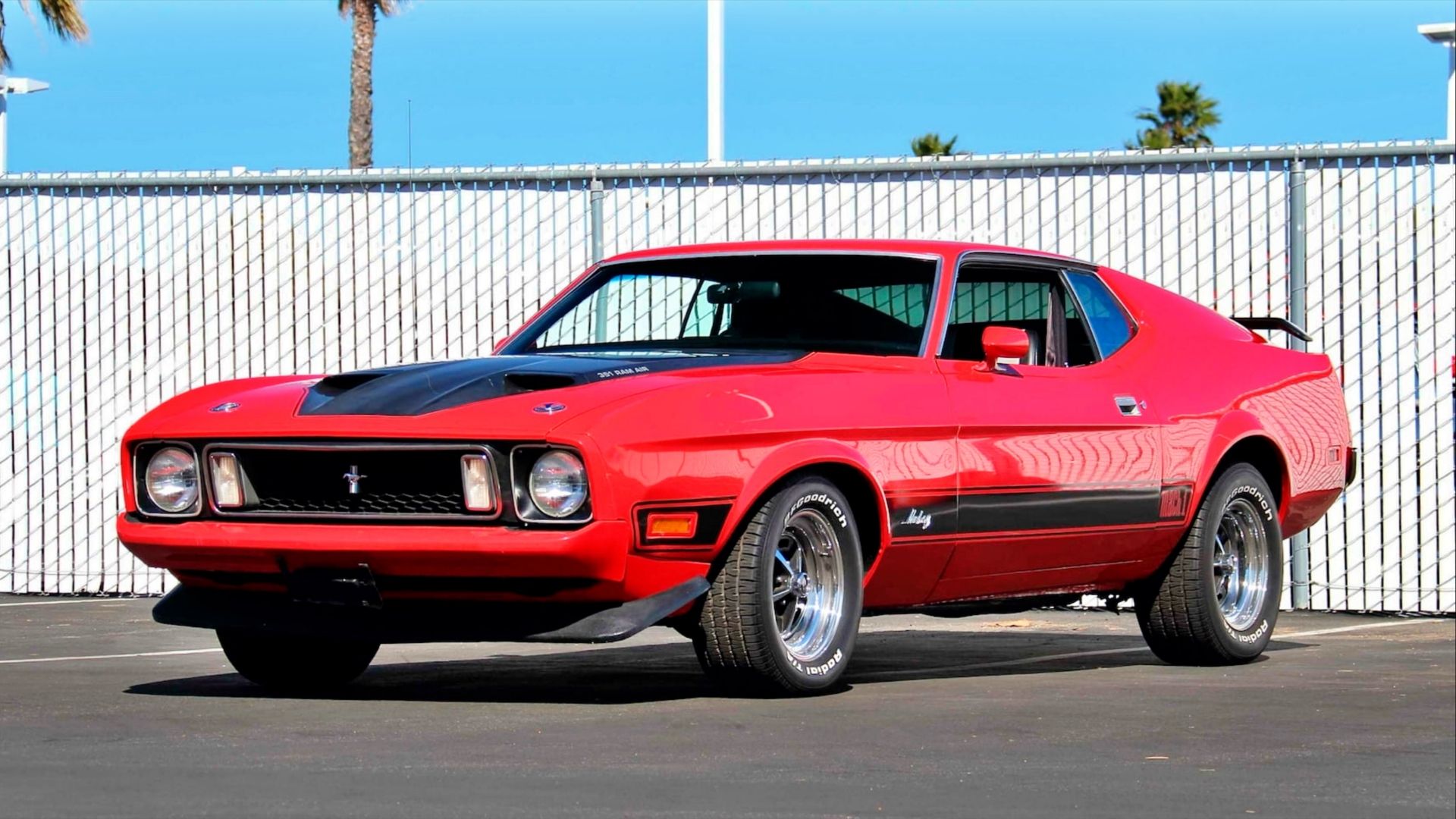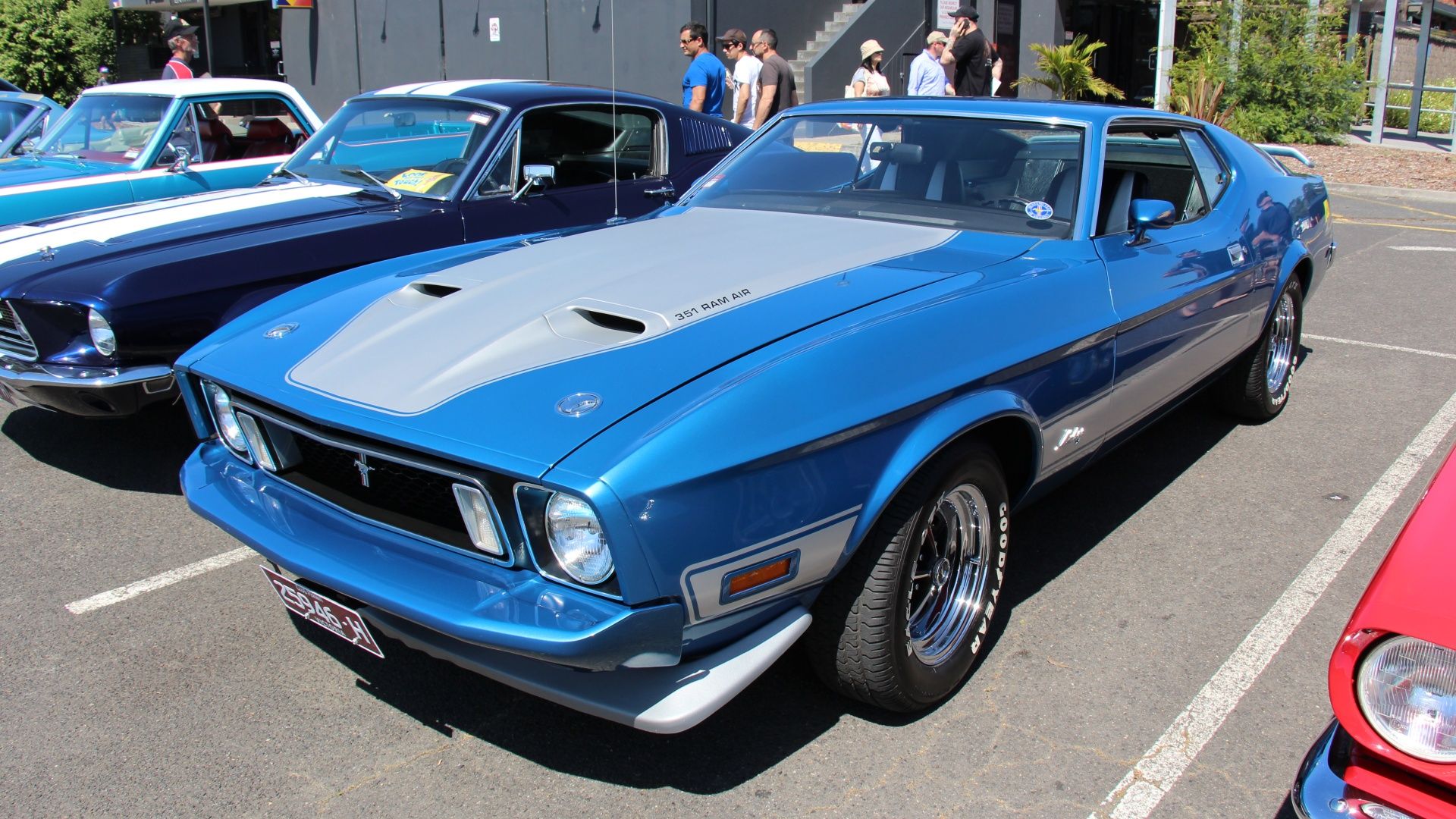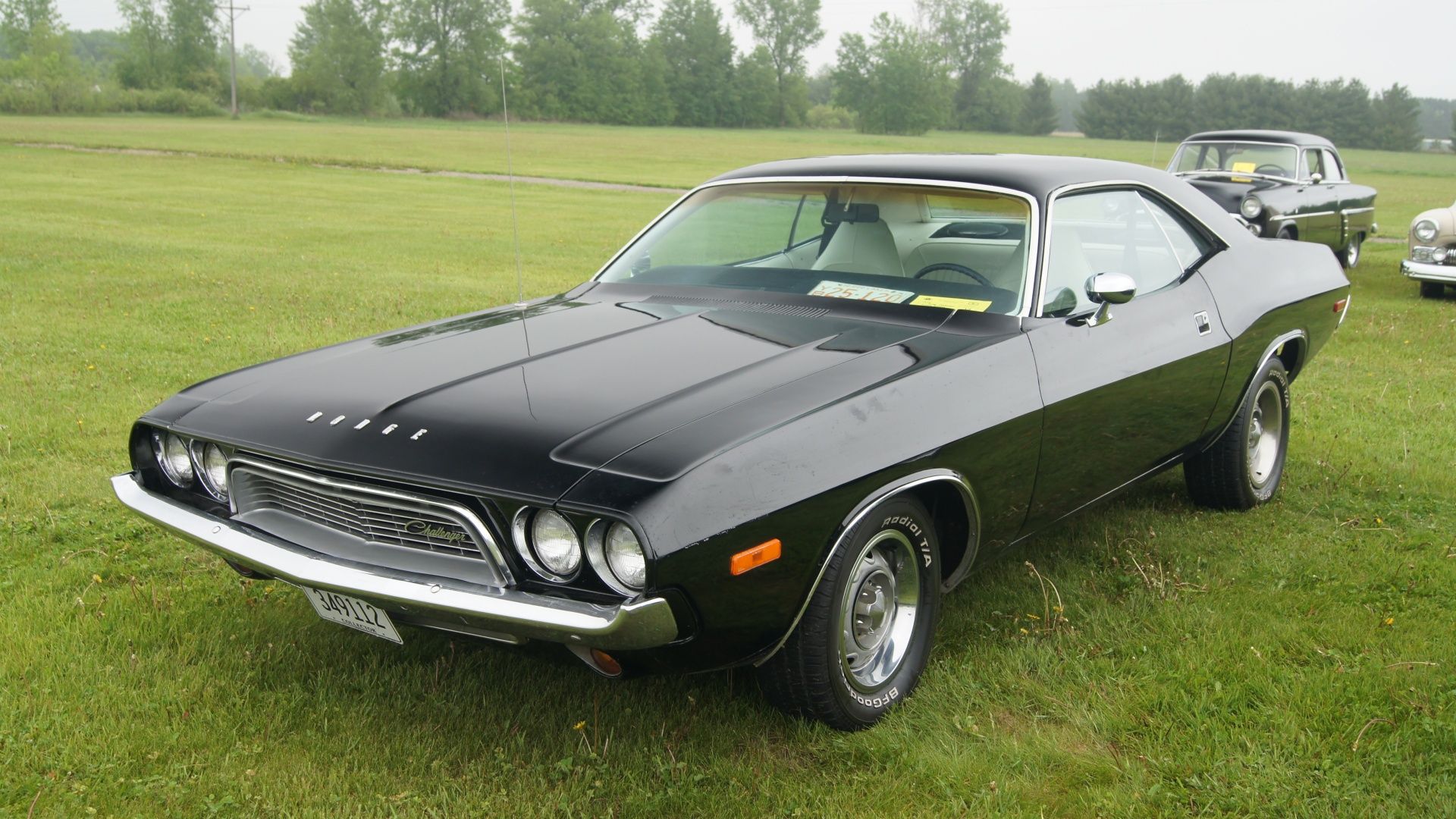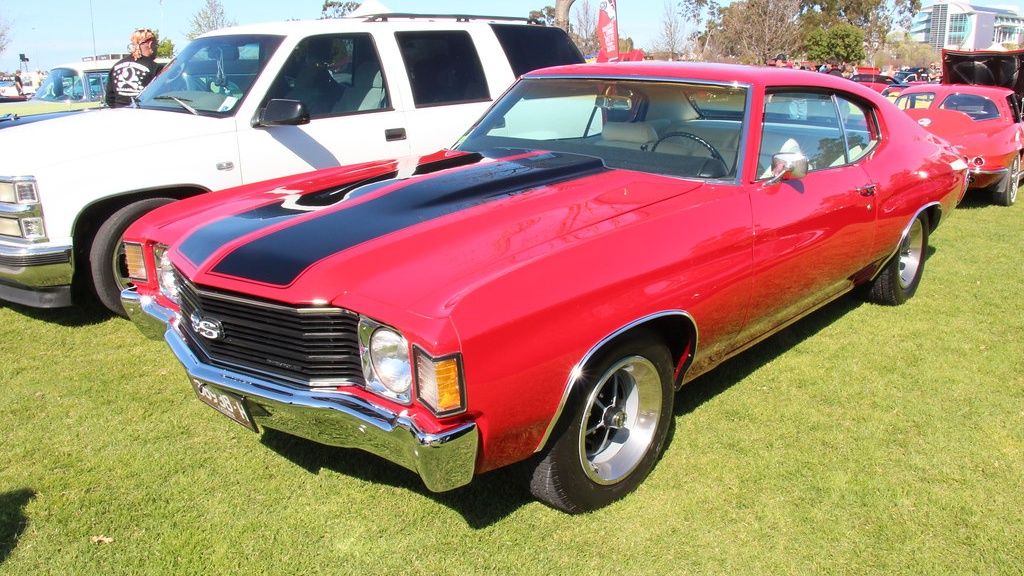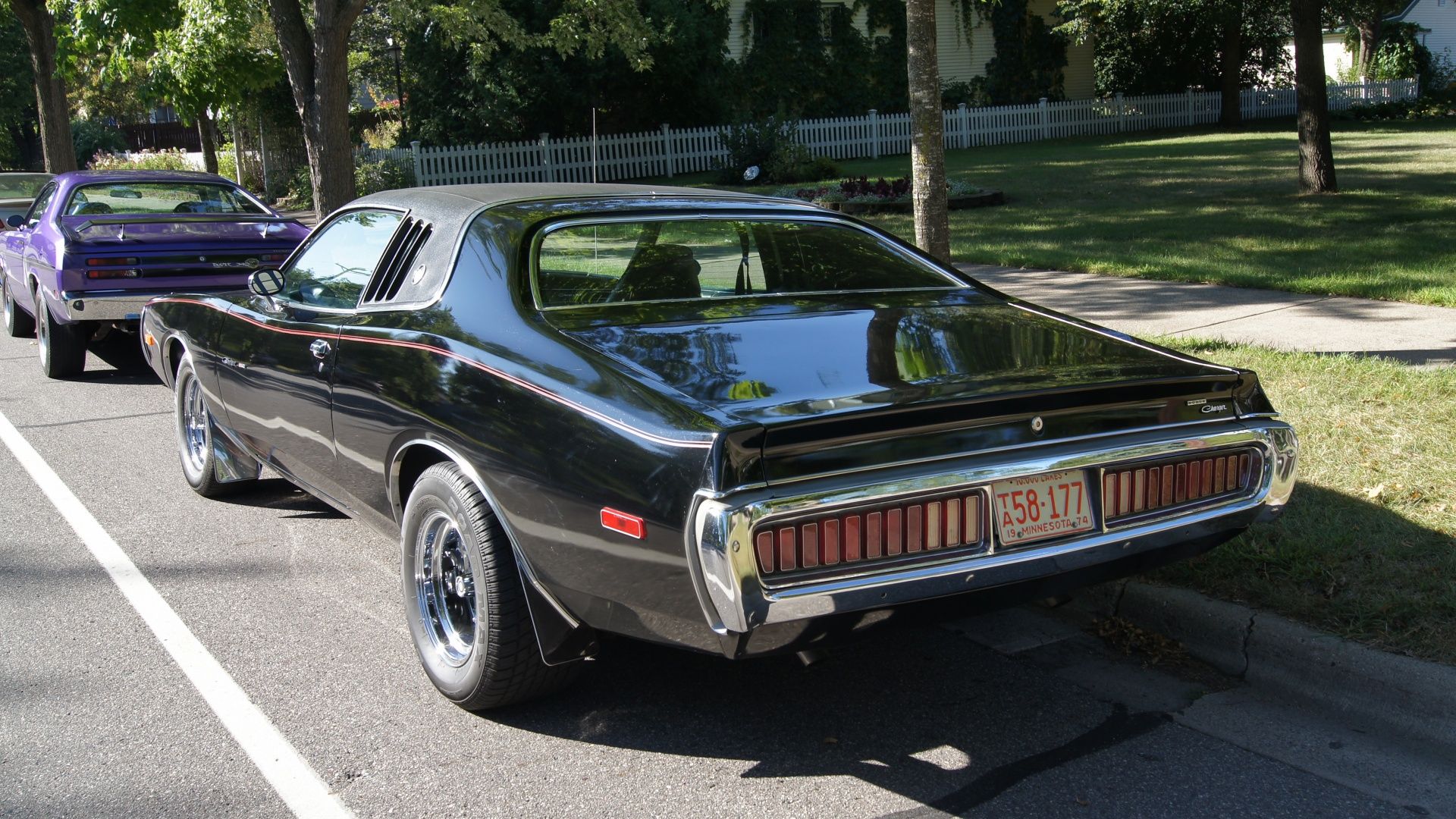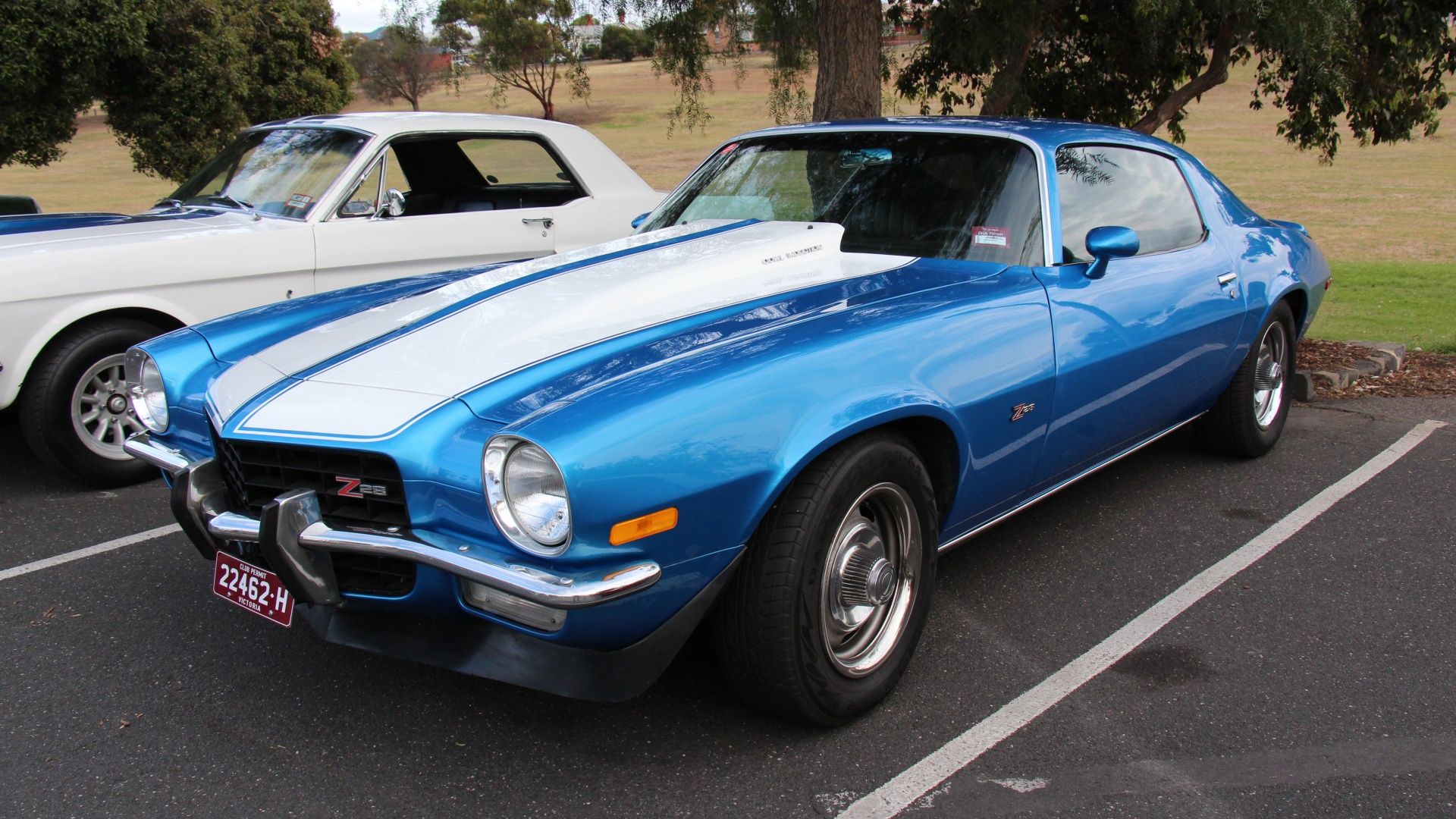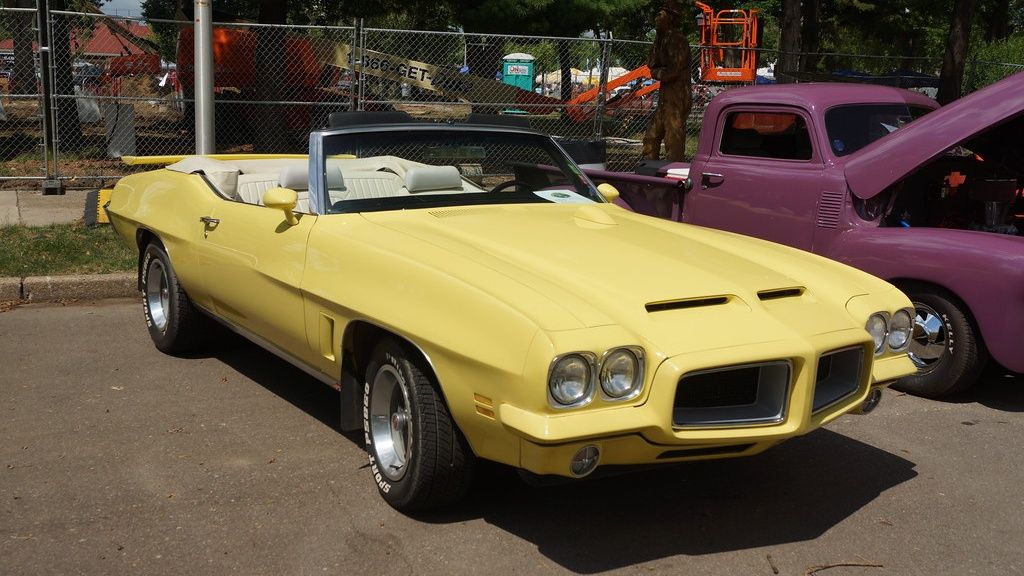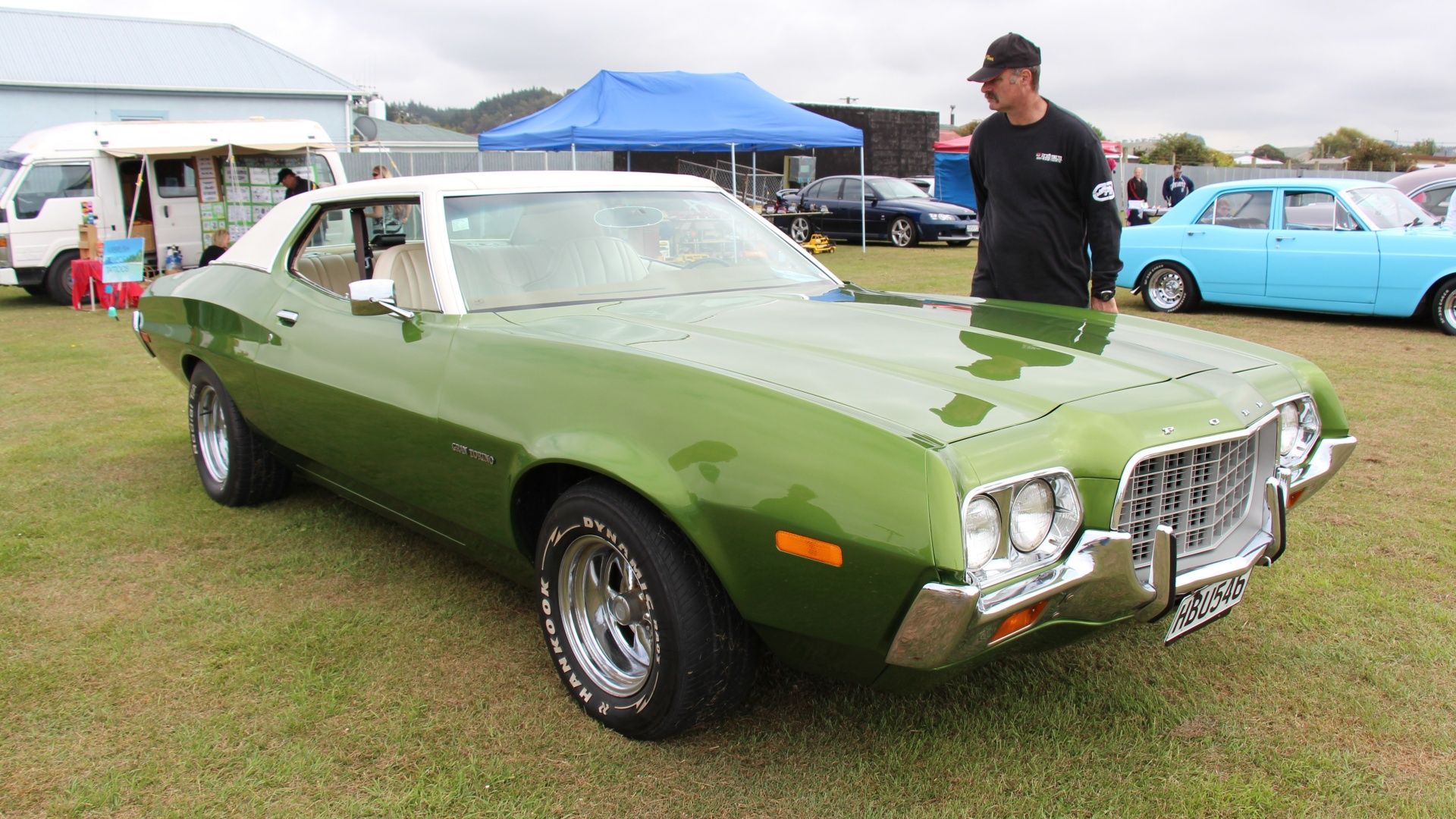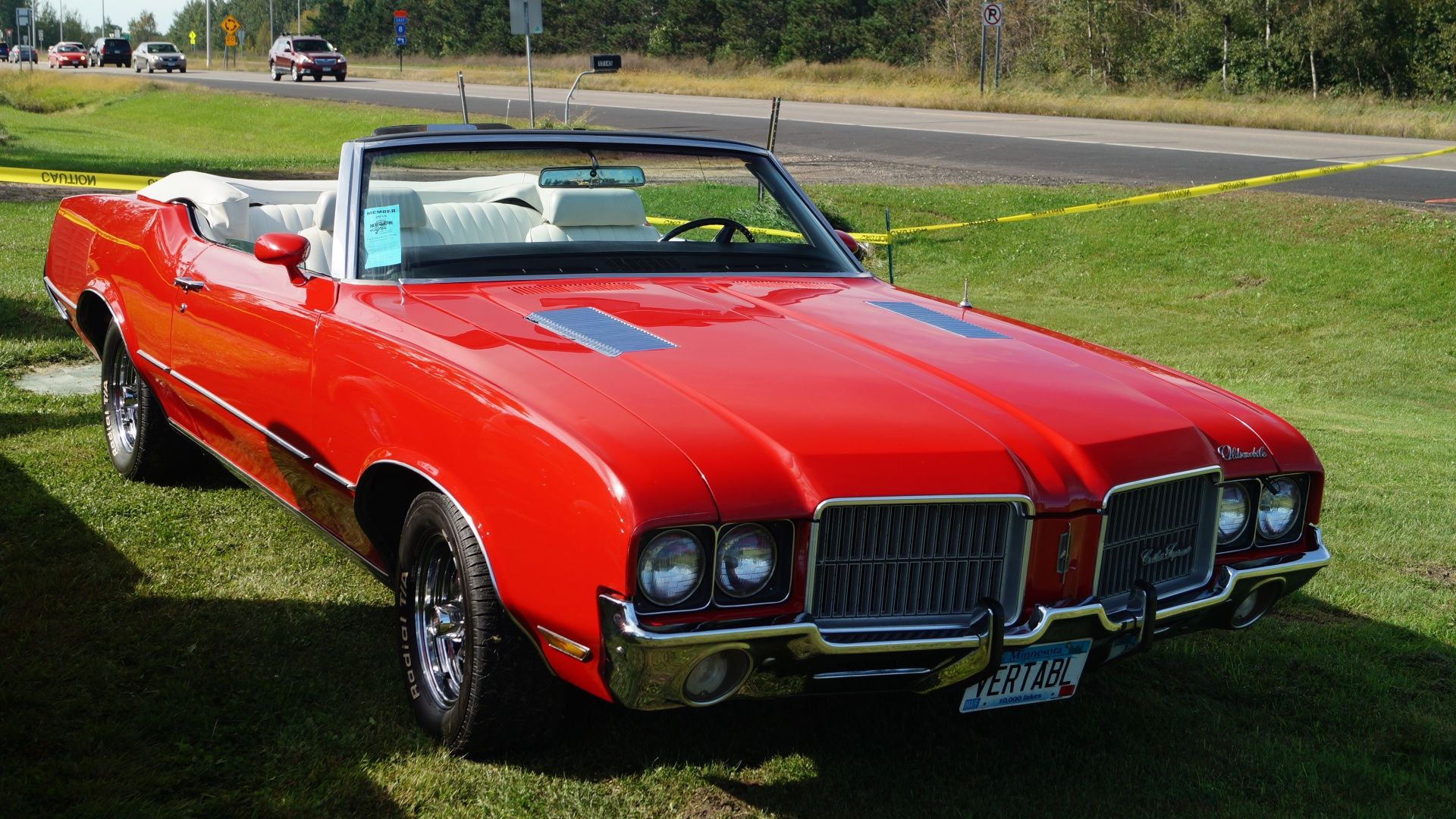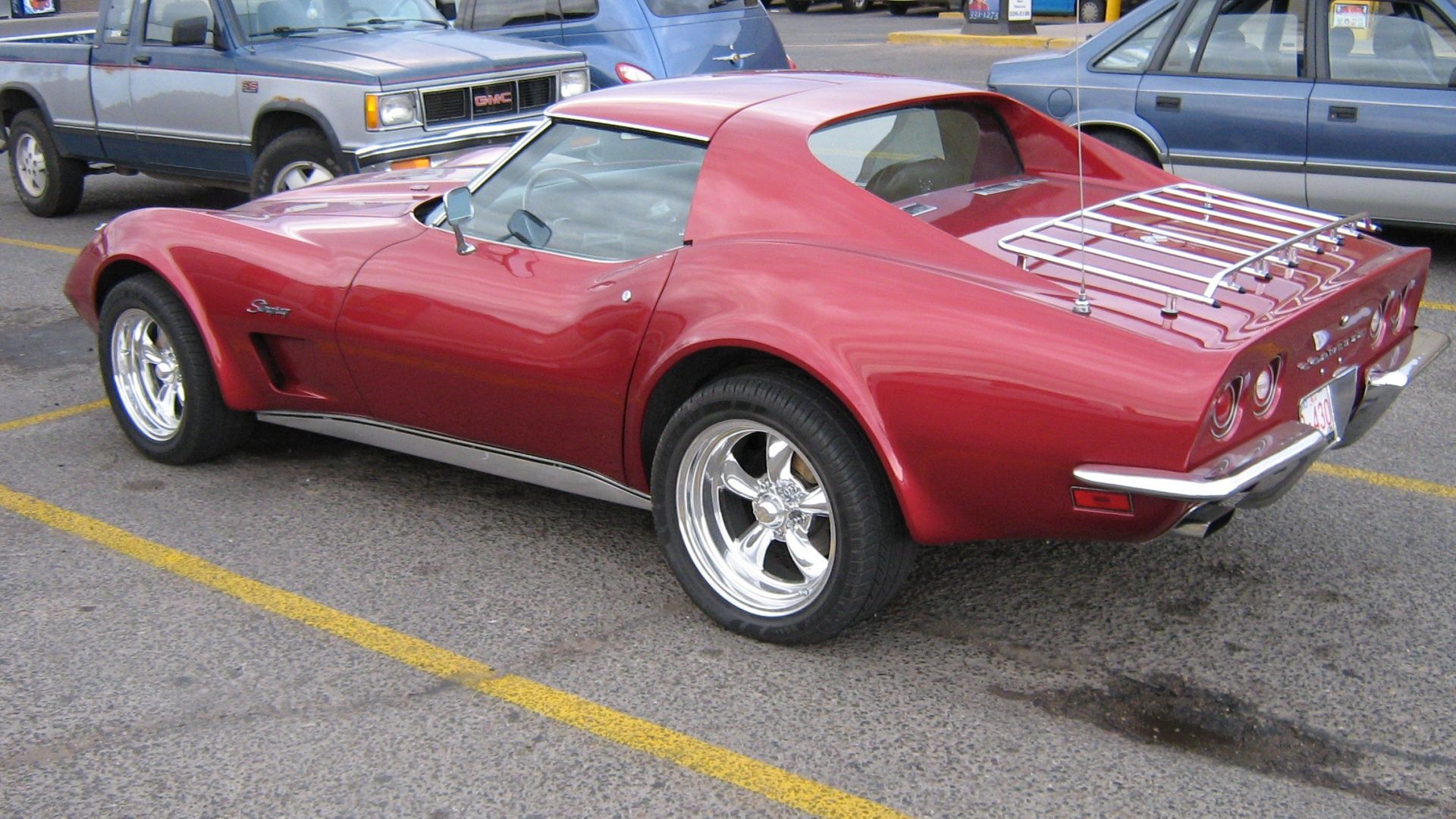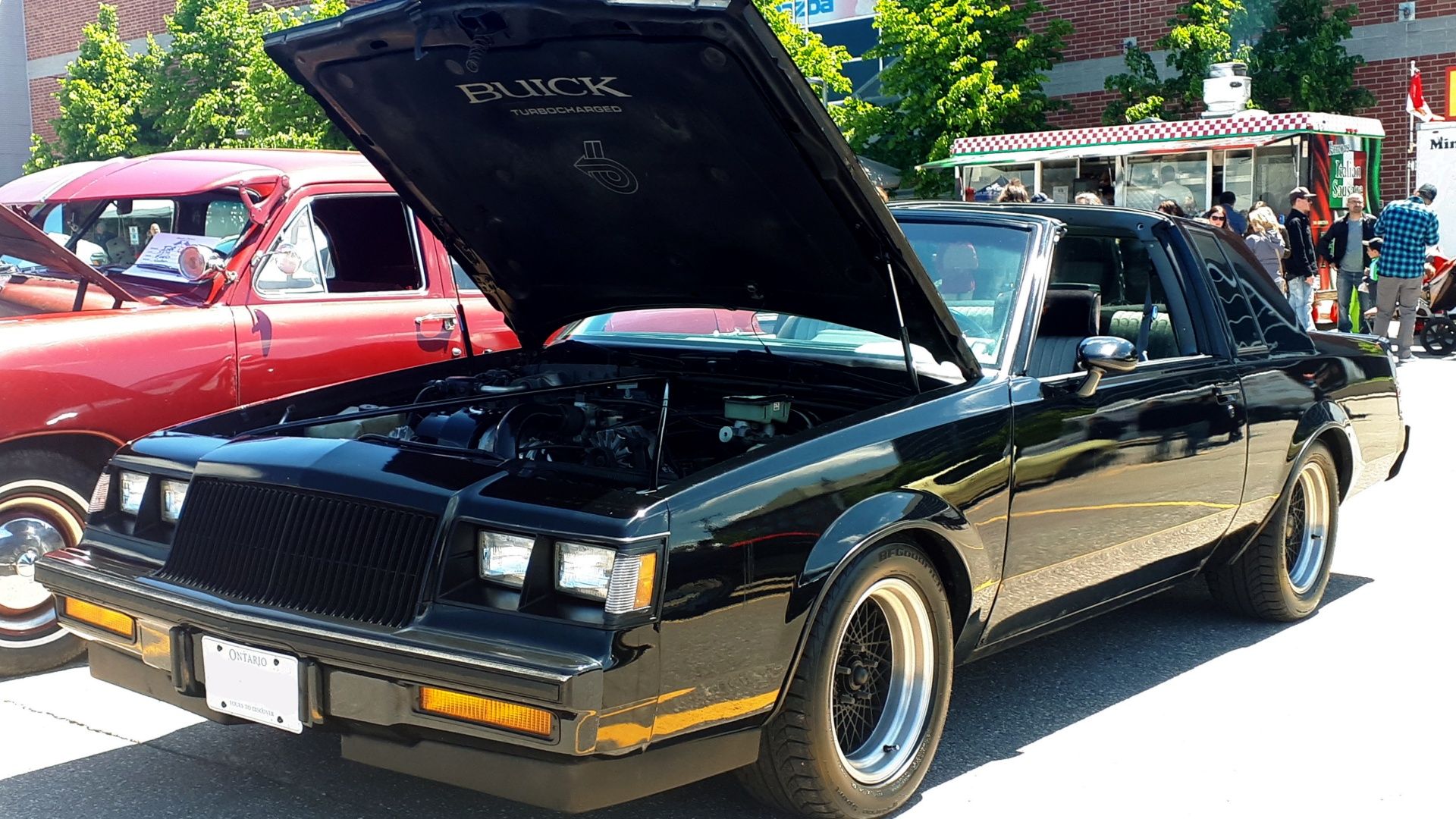We all know what the original formula for a Muscle car is – find the biggest engine you have, slam it into the smallest car possible, and maybe through in some suspension upgrades for good measure. The period between 1964 and 1971 gave us some truly impressive American performance muscle cars, but the oil crisis made short work out of them, just a year later. By that time, we still had the iconic Mustang Mach-1, Dodge Charger R/T, and Chevrolet Chevelle SS to name a few, and they even packed the same engines as before.
Not all was as it seemed, as those same, large-displacement V-8s had to be de-tuned for more efficiency, resulting in cars that looked identical to their fast predecessors, but didn’t go like them. While the right parts could fix the power deficit, every “Muscle car” built after 1971 just wasn’t as performance-oriented as before, and these 10 fast-looking American icons are the worst offenders.
10 1973 Ford Mustang Mach-1
The first-generation Ford Mustang was produced from 1964 to 1973 and came in three different versions, depending on the model year. In 1971 the Pony car became bigger, but performance versions like the Mach-1 remained on offer. Power still came from a 351 Cleveland V-8, but in a severely de-tuned state.
The 1972 H.O. (high output) version produced 275 horsepower and while 1973 still offered a 243-horsepower version, the vast majority came with the 157-horsepower of the 5.8-liter V-8. The aggressive styling was still there, but in this form, the Mach-1 was purely for show. A testimony to that is the 0 to 60 mph (97 km/h) time of 10.2 seconds with the quarter-mile taking around 17.5 seconds.
9 1974 Dodge Challenger
When it comes to fast American Muscle cars, the Dodge Challenger is one of the top-dogs in the segment. By 1974, the model was still in its first generation, but a few things changed. Styling-wise the ’74 Challenger got a new grille design, slightly revised headlights, and new, quad-taillights. The oil crisis did its dark magic under the hood too.
The smallest V-8 – the 318 – now made a measly 150 horsepower and 255 pound-feet (346 Nm) of torque. Despite that, the car retained its aggressive styling from 1969 and if you don’t spot the subtle differences, you might think it’s one of the faster versions from two years earlier. 0 to 60 mph 997 km/h) took 8.8 seconds with the manual and 10.1 with the Torqueflite three-speed automatic.
8 1972 Chevrolet Chevelle SS 454
The Chevy Chevelle SS 454 is the definition of peak, GM Muscle car. As the name suggests, the engine is a 454-cubic-inch (7.4-liter) Big-Block. In 1972, however, even the large-displacement V-8s started feeling the winds of change, which is why the range-topping ’72 Chevelle SS made only 270 horsepower. Just a year earlier, the same model produced 425 horsepower.
Torque was still decent at 390 pound-feet (568 Nm) and the 6.4-seconds 0 to 60 mph (97 km/h) time was relatively quick compared to other neutered Muscle cars. To put things in perspective, the 1971 Chevelle SS did the same discipline in 5.3 seconds. Both cars shared an identical appearance, but sadly, not identical performance.
7 1974 Dodge Charger 440
One of the most iconic MOPARS – the Dodge Charger – also experienced its fair share of performance loss. The third generation of the big Muscle car still featured aggressive aesthetics and the same 318-440 cubic-inch V-8 options from the previous generations. 1971 was the last year of the 426 Hemi, leaving the 440 as the new range-topper. Power for 1974 was 275 horsepower and 375 pound-feet (508 Nm).
In 1971, the same engine was officially rated at 370 to 385 horsepower, depending on whether the Six Pack option was added (in reality, it was 415 and 430 horsepower). Still, the 1974 Charger 440 was not as slow as other “strangled” Muscle cars, as 0 to 60 mph 9(7 km/h) happened in 7.2 seconds.
6 1972 Chevrolet Camaro SS 396
The second-generation Chevy Camaro SS was still decently quick, but still a mere shadow of its former self. It debuted in 1970, at which point the SS 396, which actually featured a 402-cubic-inch V-8 despite the badging, produced a healthy 375 horsepower.
Just two years later, the same car was “turned down” to 240 horsepower while peak torque dropped from 415 pound-feet (568 Nm) to 345 pound-feet (468 Nm). The 0 to 60 mph (97 km/h) sprint took 6.8 seconds with the four-speed manual and 0.1 seconds more with the three-speed automatic. The quarter-mile took 15.3 seconds, which is a far cry from the 1970 model year’s 14.0 seconds and 5.5-second 0 to 60 sprint.
5 1972 Pontiac GTO 455
When you think of a Pontiac GTO, you probably think of one of two cars – the 1964 original that spawned the Muscle car segment or the GTO Judge from 1969. The 1972 model year was when the second-generation GTO was getting ready to retire. There was still a 455 H.O. variant, which produced 300 horsepower – 70 down from the 1970 model – but there was an identical-looking 455 non-high output version with only 250 horsepower from the same engine.
As always, this was achieved through lower compression ratio, “lazier” camshaft, and more restrictive intake and exhaust. While the ’72 H.O. was still on par with its 1970 counterpart, the non H.O. was almost a full second slower to 60 mph (97 km/h) at 6.7 seconds.
4 1972 Ford Torino Sport 429
Ford Gran Torino has always been the bigger, more luxurious sibling of the Mustang. 1972 was the first year of the second-generation and it featured a sleek, fastback design in the Sport trim. Just because the main antagonist’s right hand drove one in the 2009 Fast and Furious, doesn’t mean it’s a fast car, however.
The range-topping 429 variant was no exception even though just a few years earlier, it was making crazy power in the Mustang BOSS 429. The ’72 Torino had to make due with 208 horsepower, which was a massive drop from the BOSS Mustang. The fact that the only transmission option for 1972 was a three-speed Cruise-O-Matic did not help either, as 60 mph 997 km/h) came after 9.2 seconds.
3 1972 Oldsmobile 442 Rocket 350
Regardless of the model year, the second-generation Oldsmobile 442 was big on style. The massive grille made for an intimidating view in the rearview mirrors of other cars while the sleek fastback roofline suggested great performance potential. While there were, indeed, 455 H.O. versions making as much as 300 horsepower even in 1972, the similarly-looking, lesser variants, which had the 350 V-8 were painfully slow.
For that year, the base 350 V-8 produced as little as 160 horsepower, although some versions made 200 with the optional dual-exhaust. Torque was equally unimpressive at 275 to 300 pound-feet (373 to 407 Nm). The 0 to 60 mph (97 km/h) took as much as 10.0 seconds and the quarter-mile took 17.4 seconds.
2 1973 Chevrolet Corvette Stingray 454
When you think fast C3 Corvettes, you think of the 427 and 454 Big Block-equipped versions. While this may have been the case until 1971, 1973 was a low point for the Corvette Stingray, in terms of performance. The range-topping 454 (7.4-liter) V-8 dropped from 425 in 1971 to 275 horsepower for 1973.
With the four-speed manual transmission, 0 to 60 mph (97 km/h) took 6.3 seconds, which was 0.4 seconds quicker than the three-speed automatic. It’s worth noting that 1973 is also the last year, in which the Chevy C3 Corvette was available with the chrome bumpers, so upon seeing one, you could easily be fooled into thinking it packs more power than it actually has.
1 1982 Buick Grand National
The Buick Grand National is an interesting case as it is the only American Muscle car on this list without a V-8. It was based on the 1978 Buick Regal, which was a boring car for people who didn’t care about performance. In 1982, Buick embarked on a journey to reinvent itself and tailor to a younger generation of hot-rodders and created the Grand National.
The base engine was a 3.8-liter, naturally-aspirated V-6 with 110 horsepower and 190 pound-feet (258 Nm). With a three-speed auto being the only option, 0 to 60 mph (97 km/h) came after 14.4 seconds. The same engine would be the base for the turbocharged GNX, which was, briefly, the quickest-accelerating road car on the planet.

